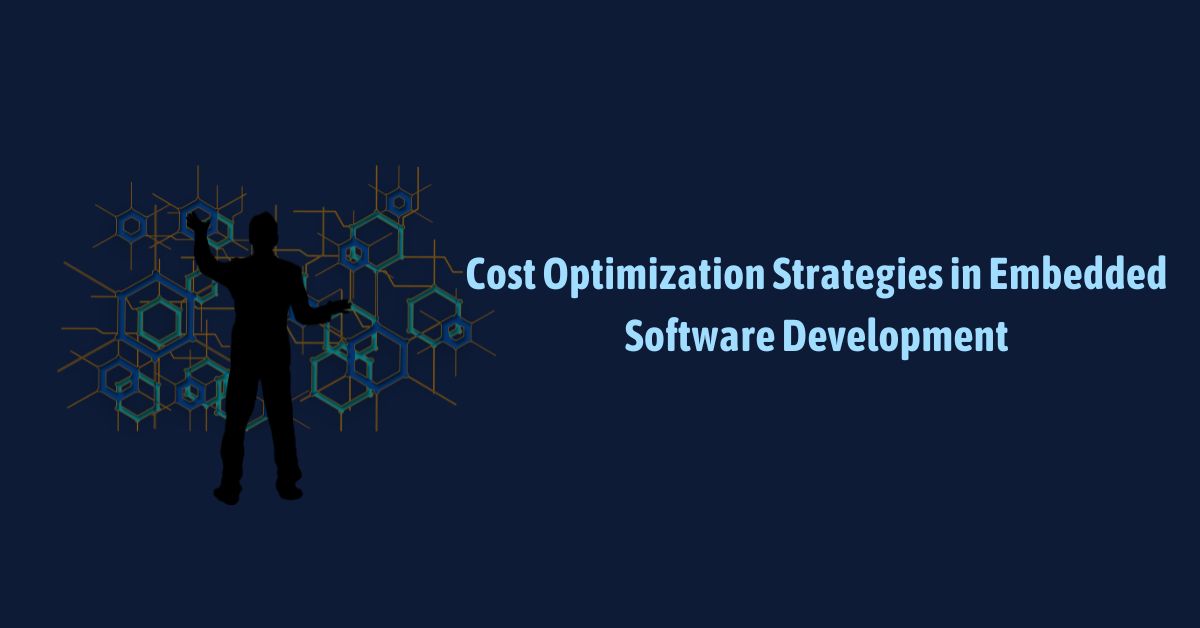
Embedded software development is essential for powering a wide array of devices, from consumer electronics and automotive systems to industrial machinery and medical devices. While advancing technology enables more sophisticated functionalities in embedded systems, managing costs remains a critical consideration for developers and businesses. Embedded software development services help in navigating these challenges by providing expertise in optimizing performance, reducing time-to-market, and ensuring compliance with industry standards and regulations.This article explores effective strategies for optimizing costs in embedded software development, focusing on methodologies, tools, and best practices to achieve efficient budget management without compromising on quality or performance.
Introduction to Cost Optimization in Embedded Software Development
Embedded software plays a pivotal role in controlling hardware and providing intelligent functionalities in devices. As the demand for smarter, interconnected devices grows, so does the complexity and cost of embedded software development. Cost optimization strategies aim to streamline development processes, enhance resource utilization, and minimize expenses associated with design, testing, deployment, and maintenance of embedded systems.
1. Agile Development Methodology
Agile methodologies emphasize iterative development, collaboration, and flexibility, which are instrumental in cost optimization. By breaking down development cycles into manageable sprints, teams can quickly adapt to changing requirements, prioritize essential features, and deliver incremental updates. This iterative approach reduces the risk of costly rework and ensures that resources are allocated efficiently throughout the development lifecycle.
2. Use of Open Source Tools and Libraries
Open source tools and libraries offer cost-effective alternatives to proprietary software solutions in embedded software development. Utilizing established frameworks such as FreeRTOS, Apache Mynewt, and Mbed OS can significantly reduce licensing fees and development costs while benefiting from community-driven support and continuous updates. However, careful consideration of licensing terms, compatibility, and security implications is crucial when integrating open source components into embedded systems.
3. Cross-Platform Development Frameworks
Cross-platform development frameworks enable developers to write code once and deploy it across multiple platforms, reducing development time and costs associated with maintaining separate codebases for different hardware architectures. Frameworks like Qt, Xamarin, and Electron facilitate the development of user interfaces and application logic that can be seamlessly deployed on embedded systems, desktop computers, and mobile devices, thereby optimizing resource allocation and enhancing development efficiency.
4. Modular and Reusable Design Patterns
Adopting modular and reusable design patterns promotes code reusability, simplifies maintenance, and accelerates time-to-market for embedded software products. By breaking down complex functionalities into independent modules or components, developers can efficiently test, debug, and update specific parts of the system without affecting the entire codebase. This approach minimizes development costs associated with software maintenance and facilitates scalability as the product evolves.
5. Automated Testing and Continuous Integration (CI/CD)
Automated testing and continuous integration (CI/CD) pipelines improve software quality, reduce manual effort, and mitigate the risk of defects in embedded systems. Implementing robust test automation frameworks and integrating automated testing into CI/CD workflows enables early detection of bugs, compatibility issues, and performance bottlenecks. By establishing a systematic approach to software validation and deployment, organizations can optimize development costs while ensuring reliable product releases and faster time-to-market.
6. Lean Software Development Principles
Lean software development principles emphasize eliminating waste, maximizing value, and fostering continuous improvement throughout the development process. Techniques such as value stream mapping, Kanban boards, and Kaizen events help identify inefficiencies, streamline workflows, and prioritize activities that add tangible value to the embedded software product. By promoting a culture of efficiency and collaboration, lean principles enable teams to optimize resource utilization, minimize overhead costs, and deliver high-quality solutions that meet customer expectations.
7. Outsourcing and Offshoring
Outsourcing certain aspects of embedded software development to third-party vendors or offshoring development activities to lower-cost regions can significantly reduce operational expenses without compromising on expertise or quality. Partnering with experienced outsourcing providers allows organizations to access specialized skills, leverage economies of scale, and allocate internal resources more strategically. Embedded Linux development services help in harnessing the flexibility and robustness of the Linux platform, facilitating seamless integration, scalability, and enhanced security in embedded software solutions. However, effective communication, clear project requirements, and rigorous vendor selection criteria are essential to mitigate risks associated with outsourcing and ensure successful project outcomes.
Conclusion
In conclusion, cost optimization strategies are integral to achieving efficient and economical embedded software development without sacrificing quality or performance. By leveraging agile methodologies, open source tools, cross-platform frameworks, modular design patterns, automated testing, lean principles, and strategic outsourcing, organizations can streamline development processes, maximize resource utilization, and accelerate time-to-market for embedded systems. Continuous improvement, collaboration, and adherence to best practices enable developers to navigate cost constraints effectively while delivering innovative and competitive embedded software solutions that meet the evolving demands of the market.
As technology continues to evolve, embedding intelligence and connectivity into devices will remain essential for driving innovation across various industries. By implementing cost optimization strategies in embedded software development, businesses can enhance their competitiveness, achieve sustainable growth, and capitalize on opportunities in the rapidly expanding IoT and embedded systems market.



